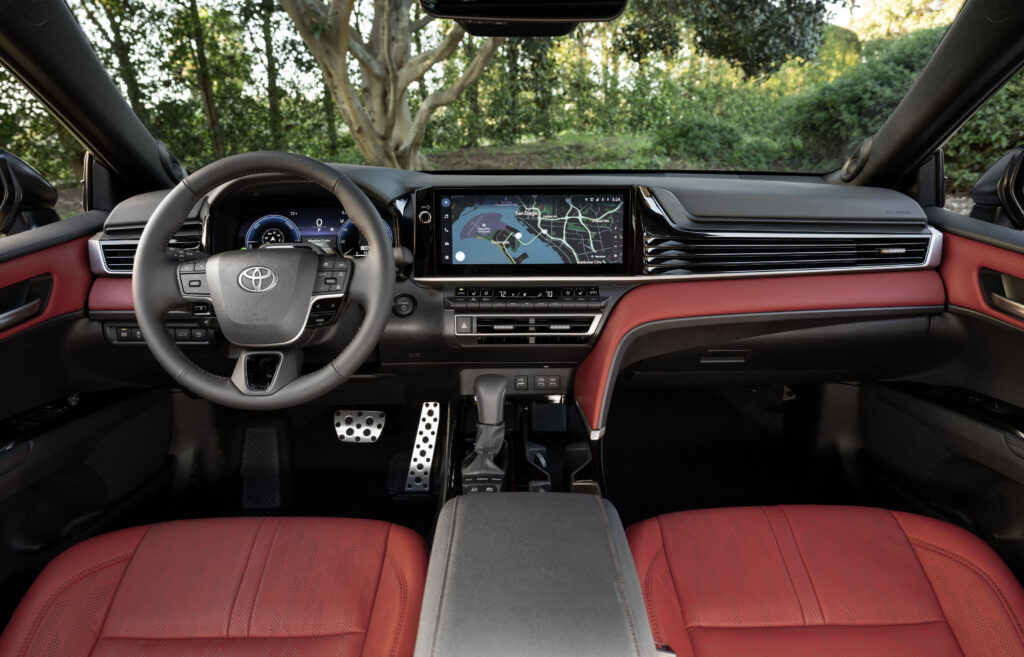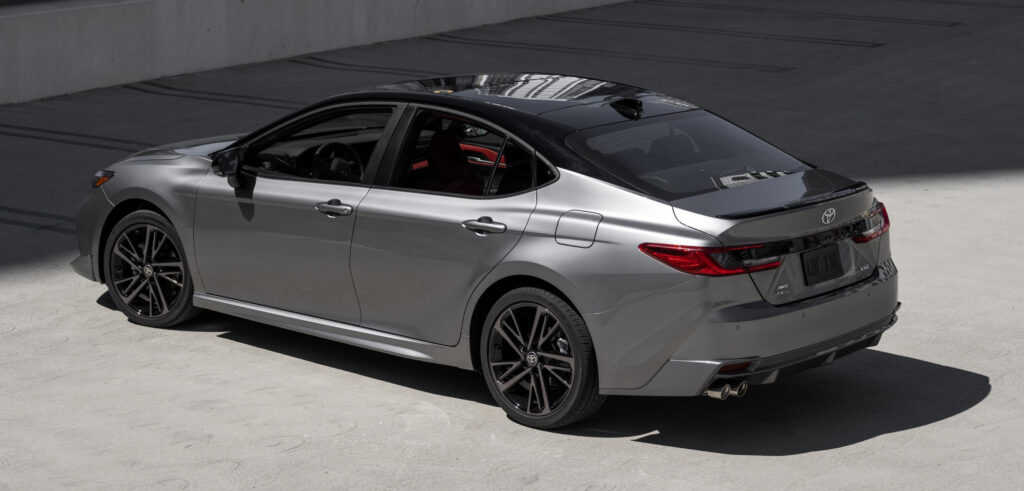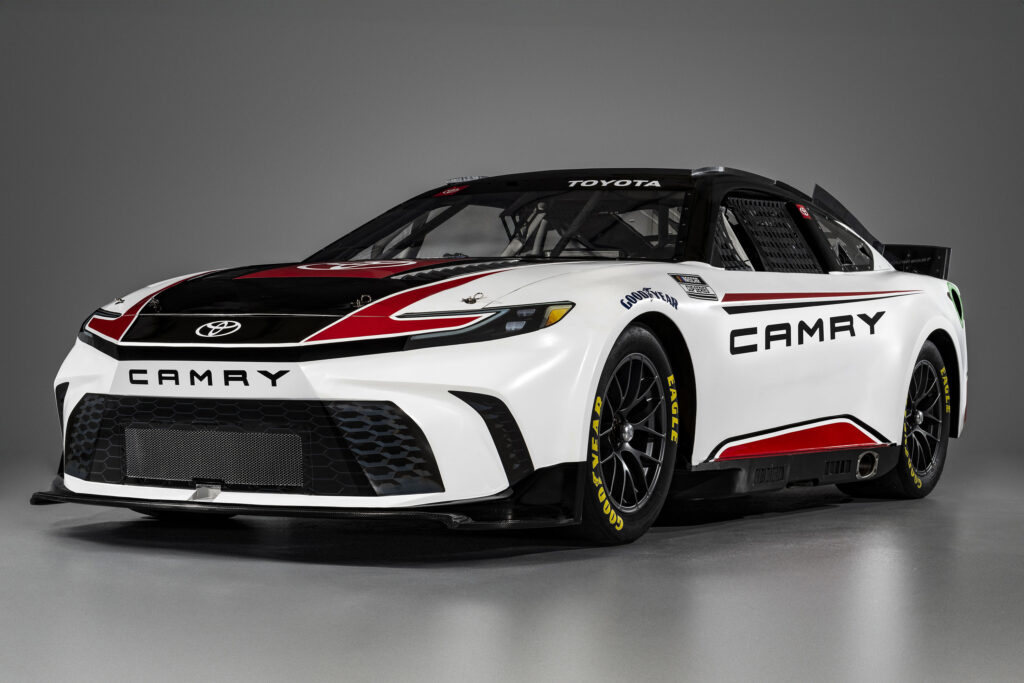The Toyota Camry Is Still America’s Favorite Car for a Good Reason
Toyota's midsize sedan gets 51 mpg.

The Toyota Camry is on a winning streak, but it comes with a couple of asterisks.
The midsize sedan has been the best-selling car in the U.S. since 2002. The record-long run would stretch back to 1997, if not for a clutch hit by the Honda Accord in 2001.
Note the use of “car” rather than “vehicle,” as the Ford F-Series truck has been number one overall since 1982. The Camry was also surpassed by the Toyota Rav4 SUV in 2017 as the “best-selling vehicle that’s not a pickup,” but that’s a win-win for the brand.

SUVs continue to chip away at car sales in the U.S., and all the American brands have abandoned the mainstream midsize sedan segment entirely.
Toyota isn’t ready to give up the fight and even updated the Camry for 2025 with fresh styling and a major change under the hood.
The Camry is now only available with hybrid power. Most Toyotas offer hybrid options, as the Camry has since 2007, but a few have become exclusively hybrid. Toyota has been criticized for dragging its feet on fully electric vehicles, but it is the undisputed king of the hybrids.
The Camry’s powertrain is based around a 2.5-liter four-cylinder engine and sends 225 horsepower to the front wheels. An all-wheel-drive model is also available that adds a separate electric motor for the rear axle and has a combined 232 horsepower rating.

Fuel economy for the entry-level front-wheel-drive Camry LE is 51 mpg combined. That makes it the most efficient midsize sedan that doesn’t have a plug and its $29,835 starting price is just $390 more than a non-hybrid Honda Accord. All-wheel drive adds $1,575 and only loses one mpg
for a nice round 50 mpg.
Work your way up through trims that come with big wheels and fancy equipment that hurt efficiency, however, and the efficiency steps down until you get to 44 mpg for the top-of-the-line $36,035 all-wheel-drive Camry XSE that I tested. That’s still very good, but highlights the significant effect that seemingly small changes like wheels and tires can have.
The XSE gets leather upholstery, a large digital instrument cluster and a 12.3-inch touchscreen for the infotainment system. All Camrys have a standard package of electronic driver aids with automatic emergency brakes, a blind spot monitor and adaptive cruise control.
A $4,075 Premium Plus package includes a range of features that includes a full glass moonroof, head-up display, 360-degree parking camera and a Traffic Jam Assist that can semi-autonomously drive the vehicle in a lane in stop-and-go traffic under 25 mph as long as the driver pays attention to the road.

The cabin will easily fit six-foot-tall passengers all around with legroom and headroom to spare and there’s a large trunk to go with it. The seats are a new design, however, and some might find them too firm. The infotainment system has Apple CarPlay and Android Auto smartphone integration, but Toyota’s native interface is fussy, especially the audio controls. Fortunately, there is a row of physical climate control buttons underneath the touchscreen that are easy to use while driving.
Toyota has been doing hybrids for a quarter-century and the Camry is dialed-in perfectly. Stepping on the accelerator pedal summons an immediate rush of electric motor power as the four-cylinder spins up to pitch in. Merging onto the highway and passing are no problem. It never feels like an economy car or leaves you wanting for more. You don’t even need to baby it to hit that 50 mpg mark, it is easily achievable.
It took a while to get here, but the Camry Hybrid is officially just the Camry now and no one should complain. Well, there is still one Camry that’s not.
Toyota’s entry in NASCAR wears the body of a Camry, but it only has two doors and is powered by a V8 engine as required by the rules. It would appear that winning races on Sunday still sells cars on Monday, even if they’re not quite the same.

